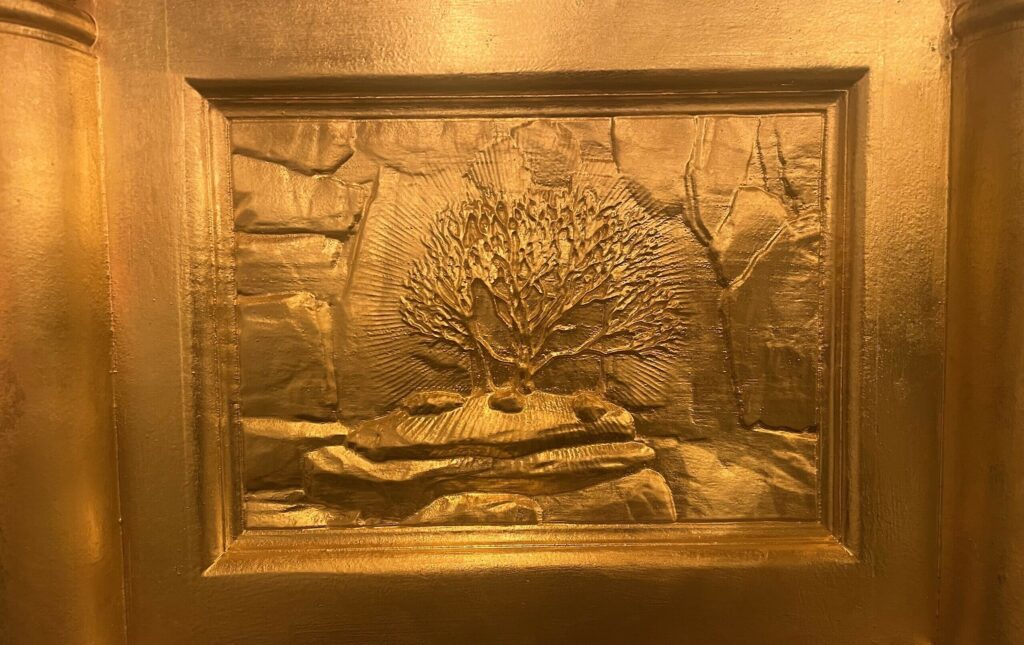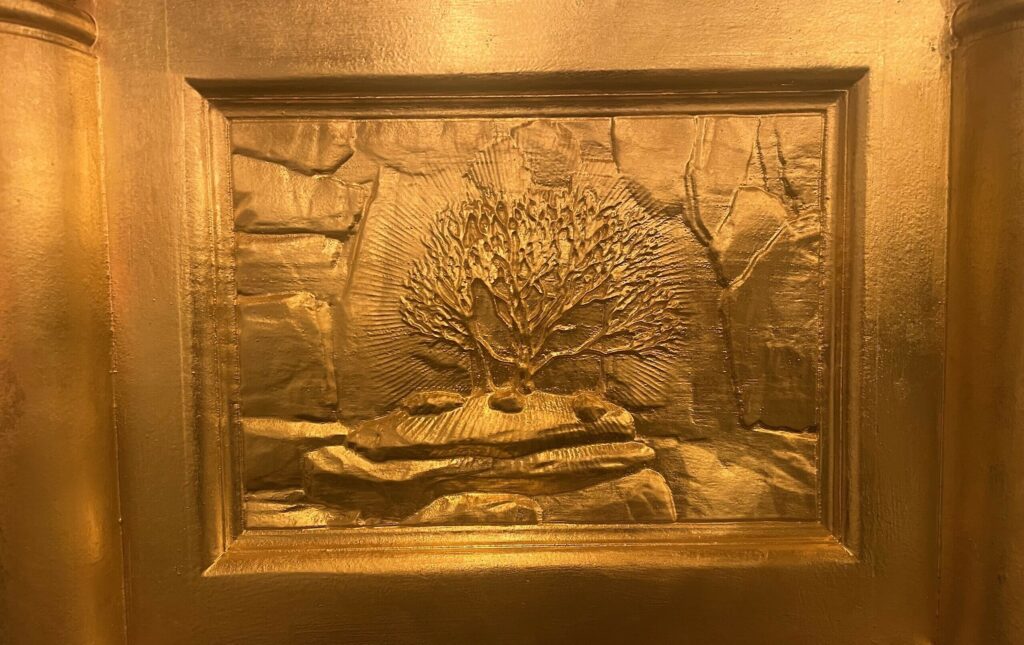
Historic Ark Replica Makes Its Jerusalem Debut During Sukkot Festival
In a remarkable fusion of ancient tradition and modern craftsmanship, a meticulously constructed replica of the biblical Ark of the Covenant was showcased in Jerusalem during the Sukkot holiday. The display, which took place at the prestigious King David Hotel, featured the golden vessel housing a Holocaust-surviving Torah scroll from Thessaloniki, Greece.
A Labor of Faith and Precision
The ambitious project, spanning three and a half years, involved 17 volunteers across multiple countries who adhered strictly to Torah specifications. The replica’s construction required approximately three tons of Egyptian Acacia wood and was adorned with high-purity gold measuring 23.75 carats – the same grade used in ancient Egyptian royal artifacts.
The project’s chief architect, identified as Jake, emphasized that creating the replica involved more than simply following biblical instructions. “It was really a deep process of discovery and a mystery,” he explained, noting that the team had to conduct extensive research to fill in gaps not addressed in the original Torah specifications.
Engineering Challenges and Ancient Techniques
The team faced numerous technical challenges in creating a functional replica. Weighing 85 pounds, the ark needed to withstand significant physical stress, particularly the torsional forces created when carried by four people. Following historical authenticity, the construction used no modern fasteners like screws or nails, instead relying on ancient Egyptian woodworking techniques such as mortise and tenon joints.
The ark’s exterior features artistic depictions of four key moments from the Exodus: Moses at the burning bush, the parting of the Red Sea, the divine guidance in the desert, and the giving of the Ten Commandments. Perhaps its most intricate feature is the pair of cherubim – winged, child-like figures – crafted in gold atop the ark.

An illustration of the biblical burning bush on a modern-day Ark of the Covenant displayed in Jerusalem on Oct. 20, 2024. Photo by Alex Traiman.
Symbolic Timing
The replica’s unveiling comes during a particularly significant moment in Israeli history, as the nation faces multiple security challenges. Several Knesset members attended the presentation, drawing parallels between the ark’s historical significance and current events.
MK Simcha Rothman, chair of the Constitution, Law and Justice Committee, reflected on the biblical relationship between the Ark and victory in warfare, emphasizing that the Ark’s power lay not in the object itself but in what it represented – the connection between the Jewish people and God.
Future Plans and Significance
The replica has already traveled to several significant locations, including Shiloh, the ancient site of the Tabernacle, and has even made an appearance at Mar-a-Lago in Florida. Its creators hope to continue its journey, possibly including visits to military camps, though specific long-term plans remain under discussion.
Lewis Topper, the project’s principal financier, views the replica as more than just a historical reproduction. “It was a project designed to bring peace to the world and to bring victory to the Land of Israel, and to bring peace and kindness to America again,” he stated.
Cultural Impact
Dr. Mordechai Kedar, a research fellow at Bar-Ilan University’s Begin-Sadat Center for Strategic Studies, highlighted the ark’s significance across different faith traditions, noting its mention in Islamic texts. He emphasized the profound impact of being able to see and interact with a representation of this sacred object after two millennia.
The project’s completion represents more than just a technical achievement; it serves as a tangible connection to ancient Jewish history and tradition. As Jake, the chief architect, concluded, “What the ark represents is the fact that the covenant is still valid… God’s commitment to His people is as strong as it was 3,500 years ago when the Ark was built.”
Biblical Ark
God first commanded Moses to build the Ark of the Covenant in the Book of Exodus:
“Have them make an Ark of acacia wood – two and a half cubits long, a cubit and a half wide, and a cubit and a half high. Overlay it with pure gold, both inside and out, and make a gold molding around it…Then put in the ark the tablets of the covenant law, which I will give you.” (Exodus 25:10-16)
Plated with pure gold and mounted with two golden Cherubim, the Ark was carried by the Levites as the Jewish nation wandered in the desert for 40 years. Playing a significant role in various Biblical accounts, the Ark is described as having supernatural powers.
Eventually, the Ark came to rest in the First Temple, which was built by King Solomon. The Ark was placed in a special inner room known as the Holy of Holies, where the High Priest would enter once a year on Yom Kippur.
The Ark was last seen in 586 BCE when the Babylonians conquered Jerusalem and destroyed the First Temple. What happened to the Ark remains unknown until today.The disappearance of the legendary Ark over 2700 years ago is an enigma that has given rise to much speculation by biblical archaeologists and explorers. There are many contradictory theories as to what really happened to this sacred artifact and where it might be today.
Approximately 35 years before the destruction of the First Temple in 586 BC, King Josiah ordered that the Ark be brought into a special chamber that King Solomon had built as part of the original plan for the Temple as found in a special Temple scroll that was given to him by his father King David. The prophets Samuel and Nathan (II Chronicles 35:3). King Josiah foresaw that the Temple would be destroyed. They ordered the Ark’s placement into this secret chamber well before Jerusalem was even being threatened.
The Rambam (Maimonides) quotes the Talmud in a number of places that state that the Ark was buried “in its place” and for “generations after generations,” and “to this very day” (I Kings 8:8) in the warren of tunnels beneath the Temple Mount. In fact, directly beneath the Holy of Holies.
The post Historic Ark Replica Makes Its Jerusalem Debut During Sukkot Festival appeared first on Israel365 News.
Israel in the News